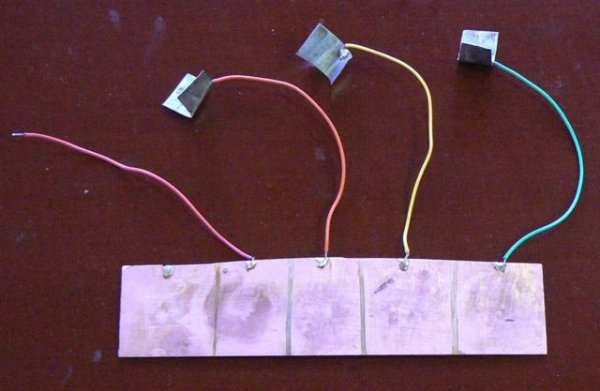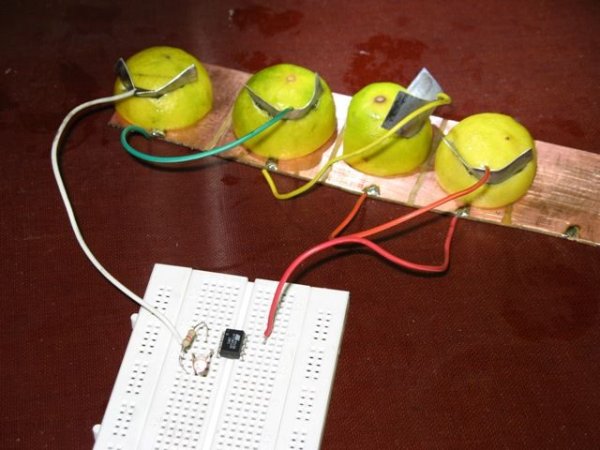Some of the fruit and vegetables we eat can be used to make electricity. The electrolytes in many fruit and vegetables, together with electrodes made of various metals can be used to make primary cells. One of the most easily available vegetable, the ubiquitous lemon can be used to make a fruit cell together with copper and zinc electrodes. The terminal voltage produced by such a cell is about 0.9V. The amount of current produced by such a cell depends on the surface area of the electrodes in contact with the electrolyte as well as the quality/type of electrolyte.
The AVR microcontroller is a leading low power microcontroller that has been around for almost a decade now. Recently, new lower power devices have been added to the AVR family, called the PicoPower AVR microcontrollers.
In this instructable, we show how even the regular AVR devices can be set up and programmed to run off a fruit battery.
Step 1: Preparing the Fruit Battery
For the battery, we need a few lemons for the electrolyte and pieces of copper and zinc to form the electrodes. For the copper, we just use a bare PCB and for the zinc, there are a few options: use galvanized nails or zinc strips. We chose to use zinc strips extracted from a 1.5V battery.
Start with a piece of bare PCB. The size of the PCB should be large enough so that you can create 3 or 4 islands on it. Each island will be used to place a half cut lemon on it.
Step 2: Prepare the Zinc Electrode
Next, open up a few 1.5V AA size cells for the zinc strips and clean it up with sand paper and solder wire to each strip.
Step 3: Arrange the Electrodes
Step 4: Add Lemons to the Electrodes

Step 5: Assemble the AVR Tiny MIcrocontroller Circuit
Wire the circuit diagram shown here on a bread board. The choice of V type of AVR is important. For example Tiny13V is very appropriate for such an experiment, since V type of AVR is rated to work down to 1.8V power supply voltage.
For more detail: Tiny AVR Microcontroller Runs on a Fruit Battery

